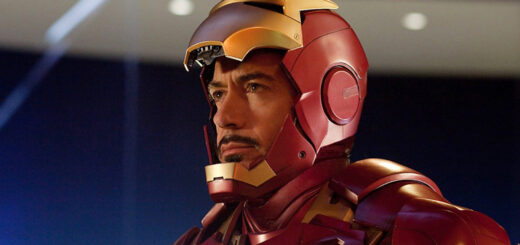The Science Behind Superpowers: Fact or Fiction?

The Marvel Universe, with its rich tapestry of superheroes and villains, has captivated audiences for decades. From the web-slinging Spider-Man to the god-like Thor, the allure of superpowers remains a fundamental aspect of its appeal. But have you ever wondered about the scientific plausibility of these abilities? Let’s delve into the science behind some of Marvel’s most iconic superpowers and separate fact from fiction.
Spider-Man’s Web-Slinging and Wall-Crawling
Spider-Man, aka Peter Parker, gains his powers from a bite by a genetically modified spider. His abilities include shooting webs, enhanced agility, and the ability to cling to walls.
Web-Slinging: Fact or Fiction?
Spiders produce silk through specialized glands called spinnerets, which is incredibly strong and flexible. Scientists have indeed been researching the use of spider silk for various applications due to its strength, comparable to steel. However, synthesizing spider silk in the amounts required for Spider-Man’s web-slinging would be extraordinarily challenging. Moreover, the mechanism of shooting webs from the wrists is purely fictional, as no spider shoots silk from such a location.
Wall-Crawling: Fact or Fiction?
Many spiders and insects can adhere to surfaces due to tiny hair-like structures called setae, which utilize van der Waals forces to stick to surfaces. Theoretically, a human-sized being could replicate this on a much larger scale, but the amount of surface area required for such adhesion would be impractical, making Spider-Man’s ability to wall-crawl more fiction than fact.
Iron Man’s Suit
Tony Stark’s Iron Man suit is a marvel of engineering, equipped with advanced AI, weaponry, and flight capabilities.
Powered Exoskeleton: Fact or Fiction?
Exoskeletons are a rapidly developing field in modern science. Companies and research institutions have developed powered suits that can enhance human strength and endurance, much like Iron Man’s suit. However, these suits are bulky, require significant power sources, and are far from the compact, sleek design seen in the movies. The miniaturized arc reactor that powers Iron Man’s suit remains firmly in the realm of fiction.
Flight: Fact or Fiction?
Iron Man’s ability to fly is one of his most iconic traits. While we do have jetpacks and advanced drones, the energy requirements and the need for stabilization in a human-sized suit make it highly impractical with current technology. The compact, high-output propulsion systems depicted in Iron Man’s suit do not exist yet.
The Incredible Hulk’s Transformation
Dr. Bruce Banner transforms into the Hulk, a giant, green, super-strong creature, as a result of exposure to gamma radiation.
Gamma Radiation: Fact or Fiction?
Gamma radiation is a real and highly energetic form of electromagnetic radiation. However, exposure to gamma rays is lethal to humans in large doses and does not confer super strength or transformation abilities. The idea that gamma radiation could trigger such a specific and dramatic transformation is purely fictional.
Thor’s Godly Powers
Thor, the Norse god of thunder, wields Mjolnir, a powerful hammer, and controls lightning.
Electrokinesis: Fact or Fiction?
The ability to control electricity, or electrokinesis, is a common trope in superhero fiction. While humans can generate small amounts of electricity (like the bioelectricity used by our nervous system), controlling or generating lightning is far beyond our capabilities. The immense power required and the precision needed make this ability fictional.
Mjolnir’s Worthiness Enchantment: Fact or Fiction?
Thor’s hammer, Mjolnir, can only be lifted by those deemed “worthy.” While there’s no scientific basis for this, it serves as a powerful narrative device. Concepts like worthiness or moral character determining physical actions remain in the realm of myth and fiction.
Black Panther’s Vibranium Suit
T’Challa, the Black Panther, dons a suit made from vibranium, a fictional metal with extraordinary properties.
Vibranium: Fact or Fiction?
Vibranium absorbs and dissipates kinetic energy, making Black Panther’s suit nearly indestructible. While we have materials like Kevlar and graphene that exhibit impressive strength and flexibility, no known material matches vibranium’s described properties. This metal remains a fascinating piece of fiction.
Genetic Mutation and the X-Men
The X-Men’s powers are explained through genetic mutations.
Genetic Mutations: Fact or Fiction?
Genetic mutations are real and can cause a wide range of physical and health-related changes. However, the specific and advantageous mutations seen in characters like Wolverine or Storm are not within our current understanding of genetics. The spontaneous development of such precise and beneficial mutations is highly implausible, making these powers fictional.
Bridging Science and Imagination: The Reality Behind Marvel’s Superpowers
While the Marvel Universe’s superpowers are rooted in scientific concepts, they are often taken to extremes that stretch far beyond current scientific capabilities. These powers serve to create compelling stories and characters rather than provide realistic portrayals of scientific phenomena. The blend of science fiction with superhero fantasy allows audiences to explore the “what ifs” of human potential and the mysteries of the universe, reminding us that sometimes, it’s fun to dream beyond the limits of our current reality.

























